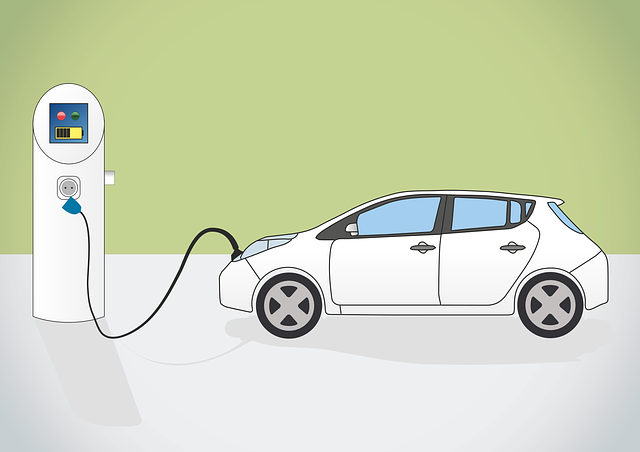Looking to register your car in California? This comprehensive guide breaks down the process step-by-step, from understanding eligibility requirements to paying registration fees. First, ensure your vehicle meets the state’s standards and gather essential documents. Next, perform a DMV VIN verification, a crucial step that ensures your car’s authenticity. After completing the application, pay the necessary fees and receive your license plate, legalizing your ride for California roads.
- Understand Eligibility for Vehicle Registration in California
- Gather Required Documents for Car Registration
- Perform DMV VIN Verification Step-by-Step
- Complete and Submit California Car Registration Application
- Pay Car Registration Fees and Receive Your License Plate
Understand Eligibility for Vehicle Registration in California

Before you can register your car in California, it’s crucial to understand if your vehicle is eligible. The California Department of Motor Vehicles (DMV) has specific requirements for registration, which include checking the Vehicle Identification Number (VIN). A DMV VIN verification ensures that your car matches the records on file and helps prevent theft or fraud. This process is typically done through a mobile vin verifier, allowing you to complete the initial inspection from the comfort of your home or garage.
Eligible vehicles must meet certain criteria related to age, condition, and previous ownership. For example, classic cars over 25 years old might have different registration requirements compared to newer models. Additionally, if your vehicle has been in an accident or has had significant repairs, a vin inspection may be necessary to verify its safety and roadworthiness. Always check with the DMV or use a reliable mobile vin verification service to ensure compliance before proceeding with registration.
Gather Required Documents for Car Registration

Before you begin the registration process, make sure you have all the necessary documents. The California Department of Motor Vehicles (DMV) requires a variety of information to ensure a smooth and accurate registration. One crucial document is the Vehicle Identification Number (VIN) verification, which can be done through a mobile vin inspection or online. This step is essential as it confirms the vehicle’s details and history, including its previous owners and any reported accidents or outstanding issues.
Additionally, you’ll need proof of ownership, typically a title document, and valid identification such as a driver’s license or state ID card. If the car is being purchased from a dealership or private seller, ensure they provide the necessary paperwork detailing the transaction. Other required documents may include registration fees, emissions test results (if applicable), and insurance information. Having these in order will significantly expedite the registration process at your local DMV office or through their online services.
Perform DMV VIN Verification Step-by-Step

Performing a DMV VIN verification is a crucial step in registering your car in California. Here’s a straightforward guide to help you navigate this process. First, gather all necessary documents, including your vehicle’s registration certificate (if available), proof of ownership, and valid driver’s license. Then, visit the California Department of Motor Vehicles (DMV) website to ensure you meet the eligibility criteria for registering a car in the state.
Next, initiate the VIN verification process through the DMV’s online platform or by scheduling an appointment at your nearest DMV office. When using a mobile vin inspection or mobile vin verifier service, ensure they are authorized and reliable. Provide the unique 17-character Vehicle Identification Number (VIN) located on your car’s chassis or in its engine bay. The system will cross-reference this information with state records to verify the vehicle’s history and condition. Once confirmed, you can proceed with the registration process, including paying the required fees and providing additional documentation as needed.
Complete and Submit California Car Registration Application

To register your car in California, the first step is to complete and submit the California Car Registration Application. This form requires detailed information about your vehicle, including its make, model, year, and unique Vehicle Identification Number (VIN). It’s crucial to ensure all details are accurate for a seamless registration process.
The application also mandates a VIN verification, which can be efficiently handled by utilizing a mobile vin verifier or undergoing a vin inspection. This process confirms the vehicle’s identity and history, aligning with California’s stringent regulations. By providing these details, you’ll be well on your way to officially registering your car in the Golden State.
Pay Car Registration Fees and Receive Your License Plate

After completing the registration application and providing necessary documents, it’s time to pay the car registration fees. These fees vary based on vehicle type and emissions standards, so ensure you consult the California DMV website for accurate pricing. You can typically pay online, by mail, or in person at a local DMV office. Once your payment is processed, the California DMV will issue your license plate. This crucial step involves a DMV vin verification to confirm your vehicle’s identity and ensure it meets all legal requirements.
You can opt for a traditional in-person visit to receive your plates or, for added convenience, use a mobile vin verifier. These services allow you to conduct the required vin inspection from the comfort of your home or on the go, streamlining the registration process even further. With your license plate in hand, ensure it’s securely mounted on your vehicle as per California laws.
Registering a car in California is a straightforward process once you understand the requirements. By gathering essential documents, completing the DMV VIN verification step-by-step, filling out the registration application, and paying the associated fees, you’ll have your vehicle licensed and on the road in no time. Remember to always check with the California Department of Motor Vehicles (DMV) for any updates or changes to ensure a smooth registration experience.



